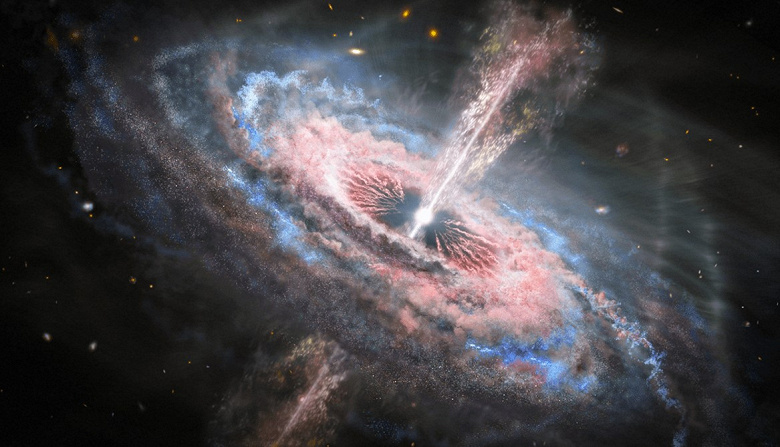Astronomers have discovered a galaxy that already had a high concentration of metals a billion years after the Big Bang. Early galaxies contain mostly hydrogen and helium, but this distant galaxy is anomalously rich in metals
The universe is becoming more metallic over time: in its younger days, it was composed mostly of hydrogen and helium. But recently, researchers discovered a galaxy that was well ahead of this trend and, a billion years after the Big Bang, had accumulated a high content of metals.
Almost all atoms heavier than helium originate in stars, the “forges of the cosmos,” which transform primordial materials into the many different elements we see today. These “forges” process the finite amount of hydrogen and helium in the Universe. As a result, the total supply of hydrogen decreases over time, while the proportion of heavier elements (which astronomers call “metals” regardless of their actual metallic properties) increases. When astronomers look back and observe the early stages of the universe, they expect to see mostly pure hydrogen and helium.

This prediction is generally supported by observations, and when looking at galaxies created in the first 1.5 billion years after the Big Bang, researchers most often observe clouds of gas that contain almost no metals. However, a collaboration led by Jianhao Huyang of the University of South Carolina recently discovered a contradiction to this convention: their observations of a hazy galaxy created a billion years ago showed a metal fraction higher than predicted for such a young source by more than two orders of magnitude.
Astronomers have discovered a galaxy that set the trend for a high proportion of metals before anyone else
Huyang and his colleagues made this discovery by observing a distant quasar called SDSS J002526.84-014532.5, which has a redshift of 5.07. Between the Earth and this source, there is a galaxy with a redshift of 4.74. As light from a quasar passes through the diffuse gas of a galaxy on its way to our telescopes, certain wavelengths of radiation are preferentially absorbed by the molecules and atoms they encounter along the way. By measuring the relative amount of this absorption, the researchers were able to determine which elements were trying to block the path of light and how dense they were.
They discovered that the galaxy contains significant amounts of carbon, oxygen, magnesium, and other heavy elements. Just 1.2 billion years after the Big Bang, this galaxy already had a greater relative amount of carbon and oxygen than our own Sun, which was born many billions of years later. Models of early galaxy formation predict a significantly lower proportion of metals, even taking into account the large uncertainties of described but not yet seen first-generation stars.
Like many unexpected discoveries, the authors of the present study cannot yet explain what could lead to such a significant content of heavy elements. They acknowledge that this may be because looking at this particular direction may have passed through a patch of “developed” gas, and the galaxy as a whole may be as metal-poor as expected. However, in this case, they will not be able to explain how the light passed through such a small area with exactly the composition data obtained.
It may be time to reconsider models of the chemical evolution of early galaxies, or there may be something special about this particular galaxy that remains hidden.




